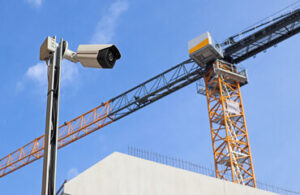Lexington Plumbing is your house’s circulatory system, running unseen behind walls and under floorboards to carry water and sewage to and from fixtures like sinks, toilets, and showers. Proper maintenance and occasional repairs keep these vital systems functioning properly, protecting your home and belongings from water damage.
Many plumbers work independently as contractors or in small businesses, which allows them more control over their schedules and projects.

Water distribution supplies quality drinking water to homes and businesses through pipes, tanks, valves, and other components. These systems are designed to deliver clean water at high pressure and flow rate. They also include systems that remove and dispose of sewage and other wastes. Many municipalities rely on water distribution systems to provide safe, potable water to residents and businesses. Water distribution systems are complex networks that require regular maintenance and inspections to ensure optimal performance and safety.
A key challenge of water distribution is the fact that there are often multiple points in the system where contamination can occur. These contaminants can enter the water supply through cross-connections, backflow, sediment buildup, microbial growth and tuberculation. Cross-connections are any direct or indirect physical connection between a safe water system and another system that allows unsafe water to be blown, sucked or diverted into the safe water system. Backflow is any unwanted flow of used or non-potable water or other materials from a premise plumbing system into the potable water system. Contamination can also enter the system through microbial growth and biofilms, which are colonies of microscopic organisms that grow on the surface of water pipes and may be resistant to disinfectants.
Sediment, microbial growth, and biofilms in the distribution system can decrease water quality and cause problems for residential and commercial users. Sediment accumulation can increase the amount of chlorine or other disinfectants needed to treat the water. Microbial growth and biofilms can contaminate the water through their metabolic processes or by releasing opportunistic pathogens into the system. Biofilms can also reduce disinfectant residual levels in the distribution system, making it more difficult to treat the water.
Plumbing is a crucial service that provides clean drinking water, drains sewage and other wastes, and maintains the integrity of buildings and structures. Because of this, plumbers must have a wide range of skills to meet the needs of their customers. They must be able to handle various tools, work in tight spaces, and deal with hazardous materials. In addition, plumbers must be able to understand the different types of pipes and their functions. In addition, they must keep up with new technology and industry practices. This can be a demanding career that requires a flexible schedule and a willingness to travel for work.
Sewage Disposal
Sewage disposal is a crucial step in safeguarding a community’s water supply. It removes harmful chemicals, bacteria and solid waste from the wastewater that comes out of homes, businesses and industry. The science behind sewer disposal includes primary treatment, secondary treatment, sedimentation and disinfection. It also involves assessing sewage disposal needs and identifying alternatives to traditional methods of septic tank and cesspool disposal.
A sewage system consists of pipes, chambers, and manholes that convey sewage from buildings to a centralized sewage treatment plant. It includes both sanitary, or domestic, sewers and storm sewers. The sanitary sewer carries residential and commercial wastes, while the storm sewer transports rainwater and other surface runoff.
Before sewage is treated, it goes through a screening process and a grit removal stage that separates large objects from the liquid. This catches rocks, sticks, paper, bottles and other debris that can cause damage to the sewage treatment plant or other parts of the water system. It’s then moved to the primary treatment stage, where it is aerated and exposed to oxygen-breathing bacteria to decompose organic wastes.
The next step, called secondary treatment, involves removing the remaining suspended solids from the sewage. One common method is the activated sludge method, which uses thick sludge that’s teeming with bacteria. Another method is the trickling filter, which sprays sewage over shallow circular tanks filled with crushed rock. Rotating arms spray the sewage over the tank walls, allowing microorganisms to break down organic wastes.
After secondary treatment, the sewage is pumped to a sedimentation tank, where it slowly circulates while solids settle to the bottom of the container. The resulting sludge is disposed of by land application, which applies it to soil for groundwater recharge and/or evapotranspiration.
Before the advent of public sewers and flush toilets, urban dwellers relied on septic systems and cesspools for sewage disposal. While some States, mainly in the South and Alaska, have almost all householders connected to public sewers today, the majority of Americans still use septic tanks or cesspools. An even smaller percentage rely on alternative sewage disposal methods, including chemical toilets and privies.
Force Mains
Most residential and commercial drain and sewer piping is gravity-fed, which saves energy, costs, and the risk of blockages. However, there are instances where the system must rely on a force main to function properly. If you live in a building that relies on this type of pipe, it’s important to have the line regularly inspected by professionals to ensure that everything is functioning as it should.
A force main is a pressurized pipeline that conveys wastewater from a sewage pump station to a discharge point. These pipes are usually installed in areas where the ground is too low for a gravity sewer or where a large obstacle would make it impossible to transport sewage using only a pipe that slopes downhill. The pumps that are located at a pumping station use extreme pressure to propel the wastewater forward. The resulting high-pressure force pushes the wastewater through the pipes until it reaches a “discharge point,” which will typically be either another pump station or a sewage treatment plant.
Like other sewer lines, force mains are subject to the same types of failures and can be vulnerable to clogs, breaks, leaks, corrosion and more. This makes it vital to have the pipes inspected regularly to avoid serious problems and to catch issues before they become costly repairs.
Force main inspections are more challenging than with other parts of a sewer system, due to the fact that it can be difficult to take the system out of service for a visual inspection. In addition, sludge buildup on the inside of the pipe and grease can obscure signs of damage.
This is where advanced inspection technology comes in handy. Pure Technologies’ smart-ball testing sends an acoustically sensitive, GPS-traceable device through the pipe to identify trouble spots in which the risk of a failure is higher than normal. By identifying these problem areas, our team can then determine whether continued monitoring is needed or fast-tracked repairs are required. This allows the utility to reduce maintenance costs, prevent costly emergency repairs, and extend the life of the force mains.
Inverted Siphons
Inverted siphons are commonly used in water systems, wastewater, and stormwater management. They can help transport fluid across natural or man-made obstacles, such as valleys or depressions. They can also be utilized in irrigation systems to provide a continuous flow of water to crops.
The inverted siphon consists of two or more pipes, where the lower pipe is under pressure. The height of the upper pipe is dependent upon the difference in pressure between the lower and higher pipes. In order for a siphon to be successful, the lower pipe must have a greater height than the upper pipe. This is achieved by arranging the pipe in a parallel or perpendicular fashion to each other, depending on the desired system layout.
It is important to ensure that the piping layout is designed to achieve self-cleansing flow conditions. Otherwise, the lower pipe component may become a trap for fecal waste and other solids that can generate H2S gas that migrates out of the invert of the siphon and into the upstream or downstream manholes. HR Wallingford provides a detailed report on how to design an inverted siphon to ensure that self-cleansing flows are achieved.
Another critical factor is the pipe size. Siphon pipes must be sized to minimize friction losses and maintain adequate hydraulic head. In the case of the inverted siphon, the lower pipe must have a diameter at least three times larger than the upper pipe. This is to prevent the incoming siphon from pushing the wastewater upstream of the invert, which would result in a negative flow at the inlet.
Regular maintenance and inspection is necessary to maintain the performance of inverted siphons. Debris and sediment accumulation can occur, which could lead to blockages and reduce the capacity of the pipeline. In addition, corrosion and structural damage can occur due to prolonged exposure to underground environments. To mitigate these issues, inverted siphons are often designed with access points or manholes at regular intervals to facilitate maintenance and repairs. In addition, remote monitoring systems can be integrated into inverted siphons to track system performance and detect potential problems.








